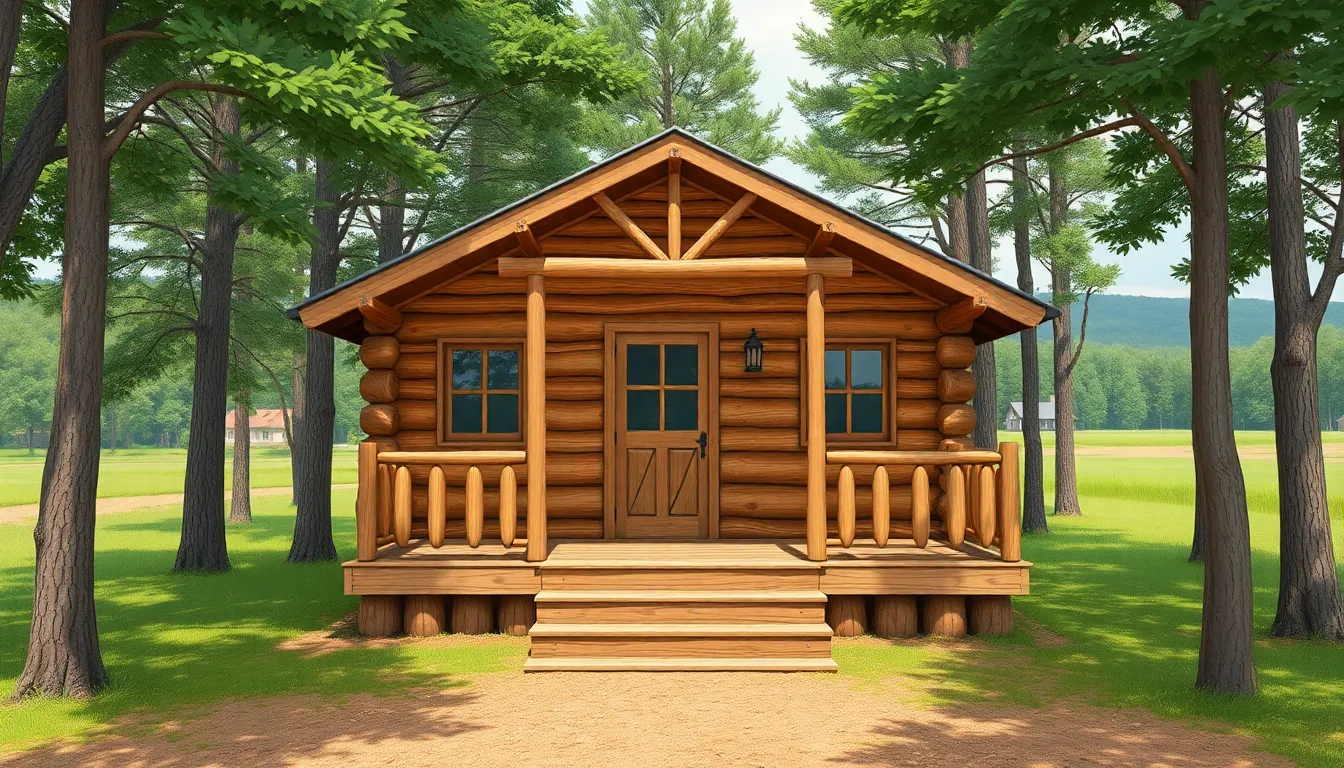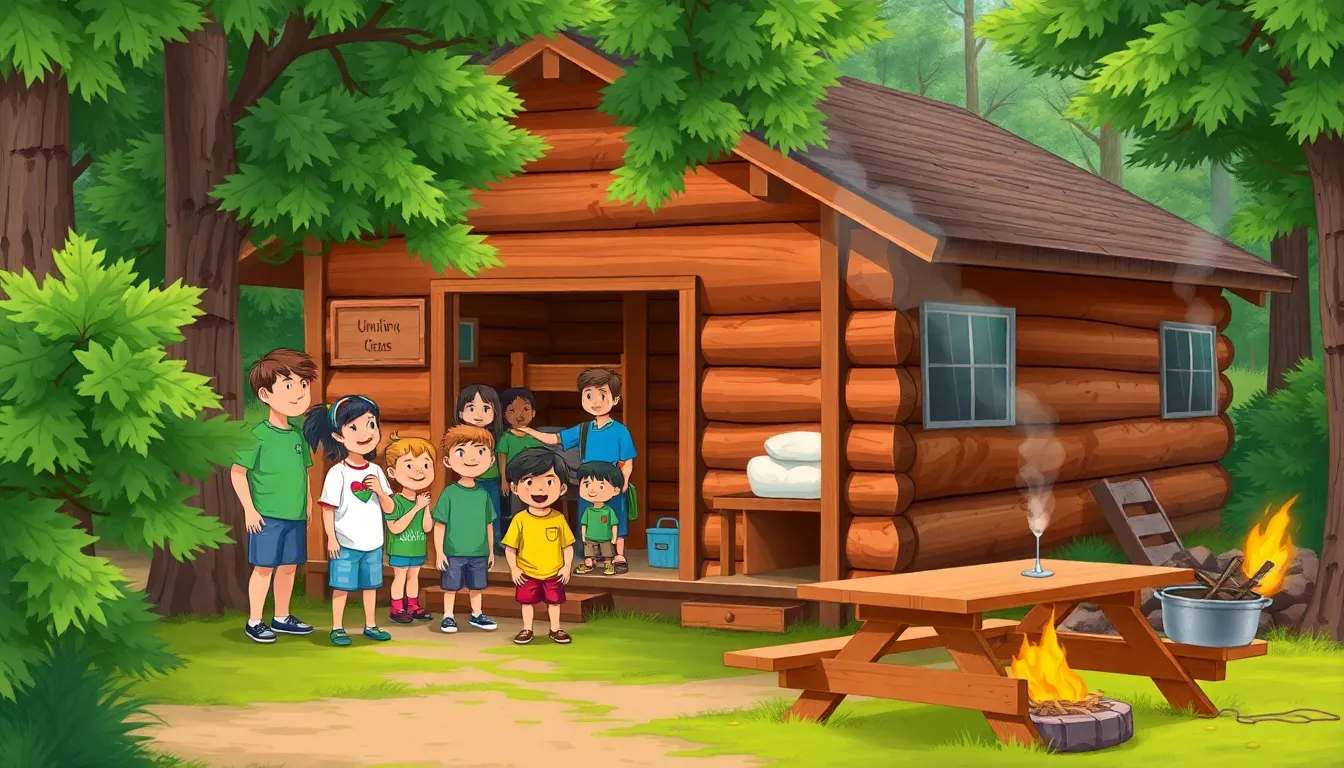Picture this: the sun’s shining, laughter echoes through the trees, and the smell of roasted marshmallows wafts through the air. Welcome to summer camp, where friendships are forged, and memories are made in cozy cabins that feel like home. A summer camp cabin isn’t just a shelter; it’s a hub of adventure, creativity, and maybe a little bit of chaos.
Table of Contents
ToggleWhat Is a Summer Camp Cabin?
A summer camp cabin serves as a temporary home for campers during their time at camp. These cabins often come in various designs and sizes, accommodating different group dynamics. Rustic wooden structures commonly characterize them, providing a connection to nature and the outdoors.
Cabins typically feature basic amenities, such as bunk beds, lighting, and storage. Campers share these amenities, fostering camaraderie and teamwork. Most cabins lack modern luxuries, which encourages bonding and shared experiences among campers.
Summer camp cabins often sit near communal spaces, like dining halls and activity centers. Proximity enhances social interactions, allowing campers to engage in games and conversations. Many camps emphasize the importance of this environment, promoting friendship and collaboration.
Activities take place both inside and outside the cabin. Campers find themselves engaging in crafts, storytelling, and group discussions within their cabins. Outside, opportunities for hiking, swimming, and sports abound, creating well-rounded experiences.
Overall, summer camp cabins form an integral part of camp life. Memories made within these walls often last a lifetime, influencing friendships and personal growth. These cabins play a significant role in shaping the summer camp experience, offering campers a safe space to explore, create, and thrive.
Features of a Summer Camp Cabin

Summer camp cabins feature essential elements that enhance the camping experience, fostering community and connection among campers. Understanding the design and layout alongside the amenities available helps clarify their roles in creating memorable summers.
Design and Layout
Cabins typically showcase rustic aesthetics, made from wood that blends seamlessly with natural surroundings. Each cabin varies in size, designed to accommodate small groups or larger gatherings, ensuring comfort for all. Ventilation systems promote fresh air flow, contributing to a pleasant indoor climate. Campers share communal spaces, encouraging interaction and bonding over shared experiences. Placement near activity areas also reinforces accessibility to games and outdoor events, further enriching the camp experience.
Amenities and Facilities
Cabins provide essential amenities that enhance comfort and functionality. Bunk beds often occupy sleeping areas, maximizing space while fostering camaraderie among campers. Storage options include shelves and lockers, customizing personal space for belongings. Basic kitchen amenities may consist of microwave units or small refrigerators, allowing for light snacks and refreshments. Cleaning supplies also ensure cabins remain tidy, promoting a hygienic environment. Outdoor facilities, like fire pits or picnic tables, create additional opportunities for social gatherings and group activities.
Benefits of Staying in a Summer Camp Cabin
Summer camp cabins provide unique advantages that enhance the overall camping experience. Two primary benefits include a profound connection with nature and ample social opportunities.
Connection with Nature
Being in a summer camp cabin immerses campers in the natural environment. Cabins typically feature wooden structures that blend seamlessly with their surroundings. Campers enjoy waking up to the sounds of birds and rustling leaves while surrounded by trees and wildlife. This proximity fosters a deep appreciation for nature. Engaging in outdoor activities like hiking and fishing becomes more accessible, allowing campers to explore the beauty right outside their doors. Exposure to fresh air and natural light improves physical and mental well-being. Nature-oriented experiences often ignite a sense of adventure and exploration.
Social Opportunities
Cabins create an inviting atmosphere for social interaction. Shared spaces encourage cooperation and communication among campers. Participating in group activities, such as games or evening storytelling, promotes bonding and friendship. Proximity to communal areas enhances opportunities for campers to learn teamwork, responsibility, and empathy. Additionally, evenings spent around campfires foster deeper connections through conversations and shared stories. These experiences contribute significantly to personal growth and lasting memories. Ultimately, summer camp cabins serve as vital hubs for social engagement and community building.
Tips for Choosing the Right Summer Camp Cabin
Choosing the right summer camp cabin involves various essential factors to ensure a memorable experience. Campers should consider key aspects like location, size, and capacity before finalizing their choice.
Location Considerations
Location plays a significant role in the cabin experience. Cabins situated near activity hubs encourage frequent participation in both planned and spontaneous events. Proximity to natural attractions like lakes or hiking trails enhances outdoor exploration. Cabins placed away from noisy areas offer serenity and a peaceful retreat for campers. Favoring cabins with easy access to communal facilities fosters interaction, as campers can mingle more freely during meals and activities. Observing surroundings ensures a comfortable balance between adventure and relaxation while enjoying nature.
Cabin Size and Capacity
Cabin size directly impacts the overall experience. Smaller cabins foster intimacy, promoting close-knit friendships among campers. Conversely, larger cabins accommodate more guests, allowing diverse groups to form and build new connections. Sufficient space ensures comfort, enabling campers to engage freely in various activities without feeling cramped. Looking for cabins with flexible sleeping arrangements, such as bunk beds, also enhances the experience. Understanding the expected number of occupants helps determine the best fit, aligning campers’ needs with available options.
Summer camp cabins are more than just a place to sleep; they’re the heart of the camp experience. These cozy spaces foster connections among campers while providing a backdrop for adventure and creativity. Whether nestled in the woods or near activity hubs, each cabin offers a unique atmosphere that enhances social interactions and personal growth.
Choosing the right cabin can significantly impact the overall experience. By considering factors like location and size, campers can find the perfect fit for their needs. Ultimately, summer camp cabins create lasting memories that resonate long after the campfire has died down, making them an essential part of the summer camp journey.




